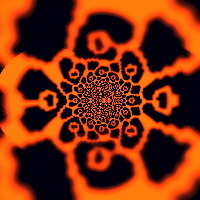

| Doxygen 설치 |


| Doxygen Wizard |






| Doxygen 에서 한글은? |


| Doxygen, chm 파일 만들기 |


http://www.stack.nl/~dimitri/doxygen/index.html
 | latest release v1.8.2 - last page update Sat Aug 11 2012 |
Doxygen Manual Generate documentation from source codeDoxygen is a documentation system for C++, C, Java, Objective-C, Python, IDL (Corba and Microsoft flavors), Fortran, VHDL, PHP, C#, and to some extent D. It can help you in three ways:
Doxygen is developed under Linux and Mac OS X, but is set-up to be highly portable. As a result, it runs on most other Unix flavors as well. Furthermore, executables for Windows are available. Doxygen licenseCopyright © 1997-2012 by Dimitri van Heesch. Permission to use, copy, modify, and distribute this software and its documentation under the terms of the GNU General Public License is hereby granted. No representations are made about the suitability of this software for any purpose. It is provided "as is" without express or implied warranty. See the GNU General Public License for more details. Documents produced by doxygen are derivative works derived from the input used in their production; they are not affected by this license. User examplesDoxygen supports a number of output formats where HTML is the most popular one. I've gathered some nice examples of real-life projects using doxygen. These are part of a larger list of projects that use doxygen. If you know other projects, let me know and I'll add them. Commercial SupportI'm currently investigating the possibilities of providing commercial support for doxygen. The forms of support I'm thinking of are:
To get a better understanding of the feasibility, please let me know if you have a need for this type (or another type) of doxygen related commercial support. Future workAlthough doxygen is successfully used by large number of companies and open source projects already, there is always room for improvement. You can submit enhancement requests in the bug tracker. Make sure the severity of the bug report is set to "enhancement". Acknowledgements
|
(c) 1997-2012 Dimitri van Heesch, first release 27 oct 1997.
독시전 사용법
출처 : http://acidlikk.tistory.com/entry/Doxygen에서-GraphVizdot로-Diagram-그리기
Doxygen에서 GraphViz(dot)로 Diagram 그리기
Posted 2007/11/28 14:59 by acidlikk'디자인패턴과방법론 > 개발방법론' 카테고리의 다른 글
| LineReader TDD 동영상 (0) | 2012.11.01 |
|---|---|
| TDD 개발방법론 (0) | 2012.11.01 |
| 단위테스트 (0) | 2012.10.31 |

 ) from a set of documented source files. There is also support for generating output in RTF (MS-Word), PostScript, hyperlinked PDF, compressed HTML, and Unix man pages. The documentation is extracted directly from the sources, which makes it much easier to keep the documentation consistent with the source code.
) from a set of documented source files. There is also support for generating output in RTF (MS-Word), PostScript, hyperlinked PDF, compressed HTML, and Unix man pages. The documentation is extracted directly from the sources, which makes it much easier to keep the documentation consistent with the source code.